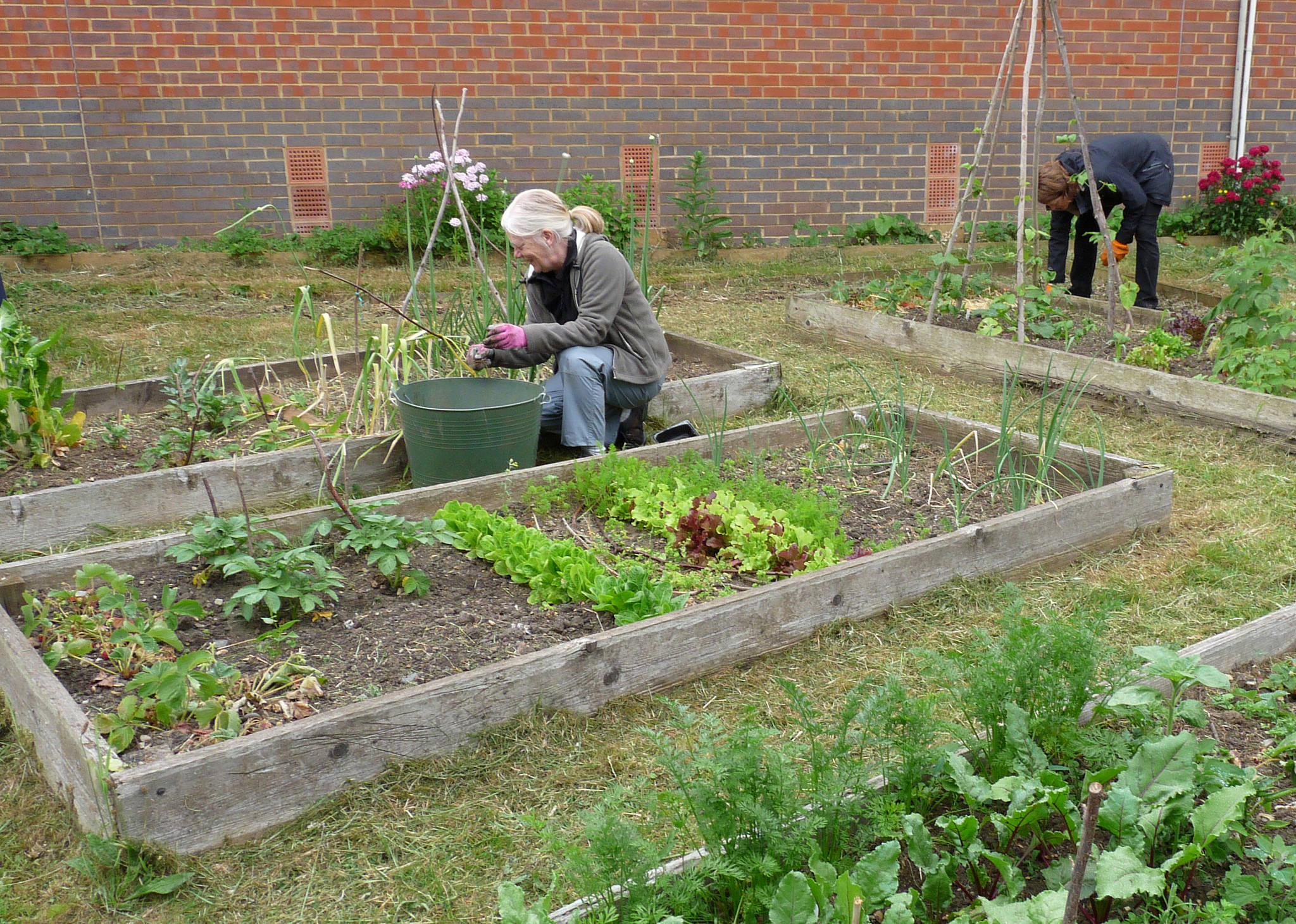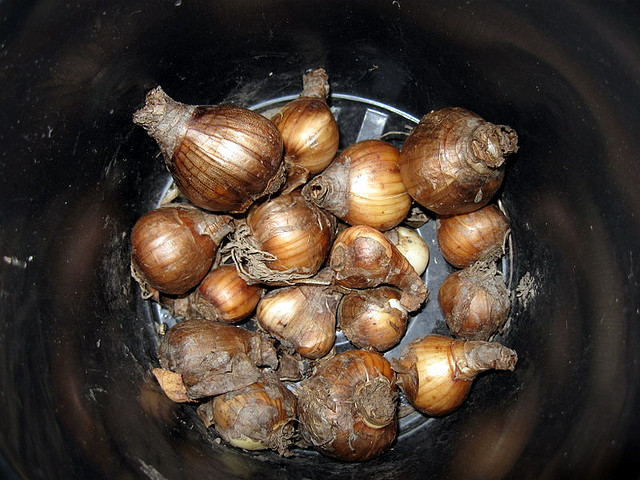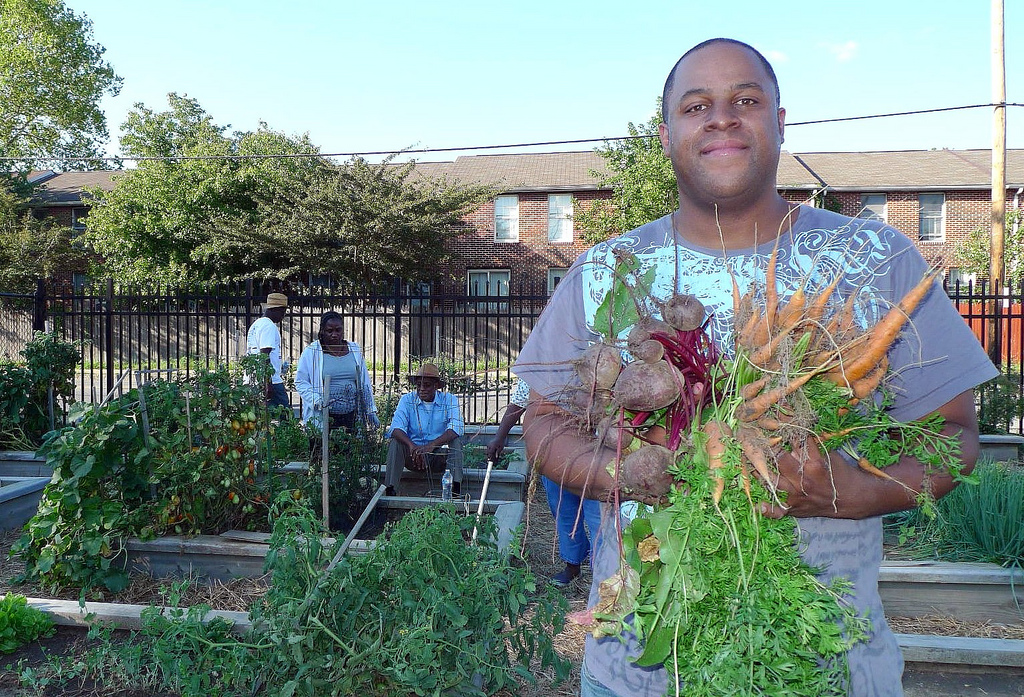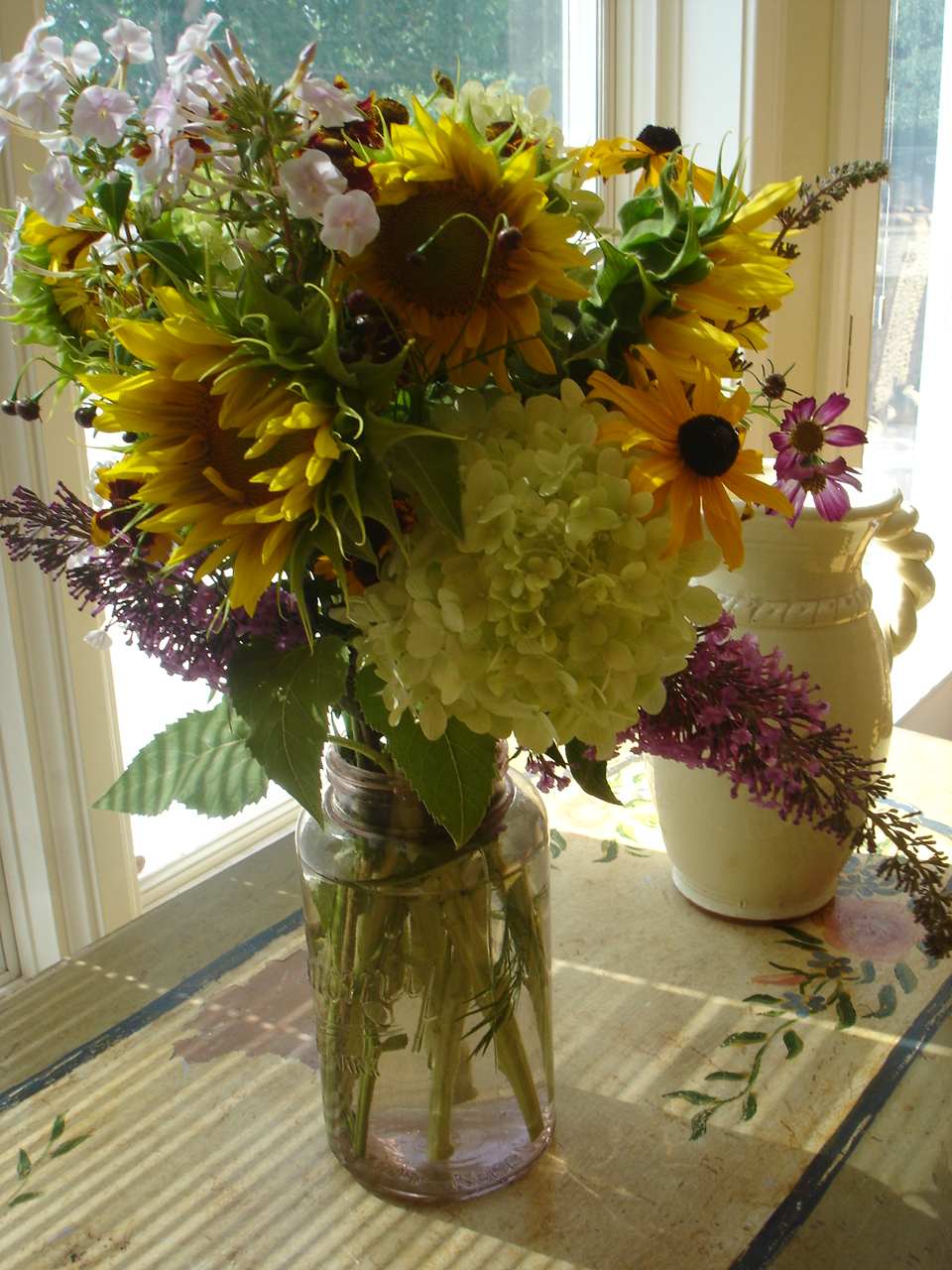
People working in their garden lots
Photo by Karen Blakeman/CC, Flickr
Community gardening
Story adapted from Wikipedia by Patti-Lea Ryan and the writer’s experience
Level 3
Community gardening is very popular in cities.
Many people like to grow fresh vegetables and flowers.
Some gardeners do not have space for a garden.
So they can become a member of a community garden.
These gardens are maintained by the gardeners.
Benefits of a community garden
Gardening:
– is good exercise.
– is good for the environment.
– makes the community beautiful.
– is a good way to spend time with your children.
– helps to get rid of stress.
– brings feelings of happiness and well-being.
– provides healthy food.
– is a good way to meet new people.
Most Community gardens are city owned
Often, unused lots in the city
are made into plots.
These plots are rented out for a small fee.
The size of the lots vary in each garden.
The cost is based on the size of the lot.
A small lot might be about $15 a year.
A mid size lot might be $23 a year.
A large lot might be $30 a year or more.
Often there is a wait list.
Rules
Some areas of the garden
are open for everyone’s enjoyment.
The gardeners share in the care
for these open areas.
The rest of the garden usually has within wooden boxes.
These boxes are private.
No one else can plant
or take anything from these boxes.
Dogs are not allowed in most community gardens.
What you need to get stared

Flower bulbs
Photo by Donald/CC, Flickr
You do not need much to get started:
– Plants, bulbs or seeds
– Soil
– Water
– Sunshine
– More water
– Tools
Some gardens have a few tools
that can be borrowed.
Be sure to put them back.
It is best to bring your own tools.
Belonging to a community garden is good for the environment

Inside a compost box
Photo by msacbmom/CC, Flickr
Most community gardens have compost boxes.
Compost boxes are where people put
their unwanted organic food and plants.
They also need some organic paper (no toxic inks),
a bit of water sometimes.
And worms.
Worms love to eat the garbage.
Over time, it becomes fertile soil.
Gardeners mix the soil into their boxes.
Gardeners share in working with the compost boxes.
Take anything home that can’t be composted.
Harvest Time

Harvest time
Photo by TCDavis/CC,Flickr
Harvesting the vegetables and flowers is a lot of fun.
Most gardeners take their produce home.
The vegetables can be eaten right away.
Or, they can be canned or frozen.
Flowers can be cut and put into vases to be enjoyed.
Vocabulary:
- lot: a piece of land
- plot: a small piece of ground for gardening
Link:
A list of links for community gardens around BC:
There are tips on gardening listed in here too.
